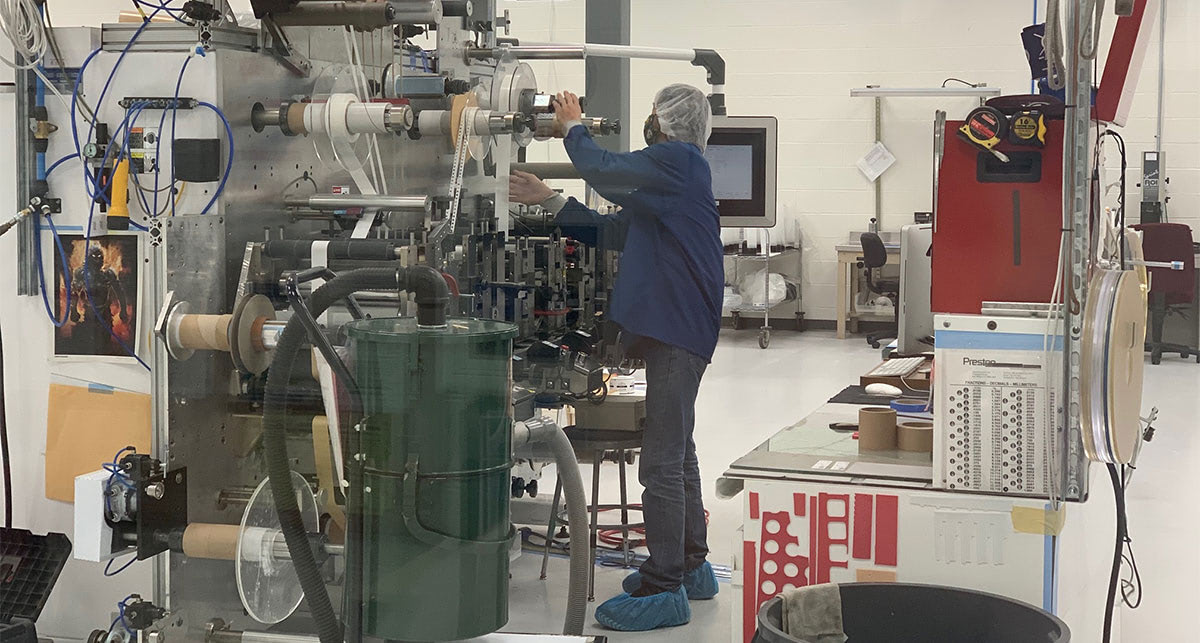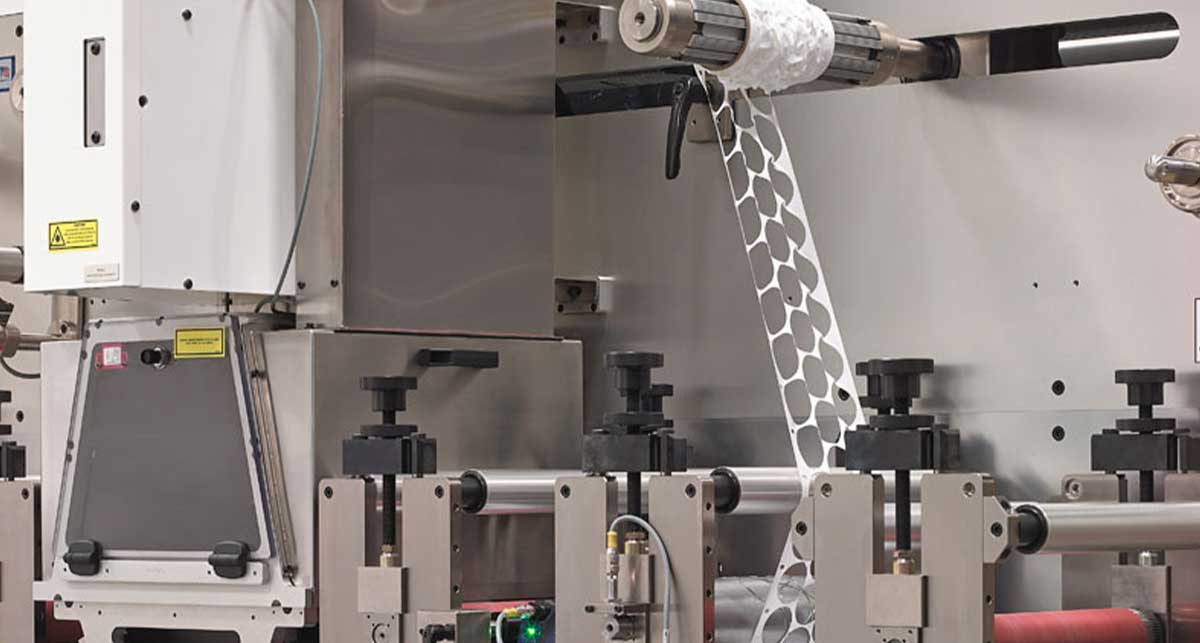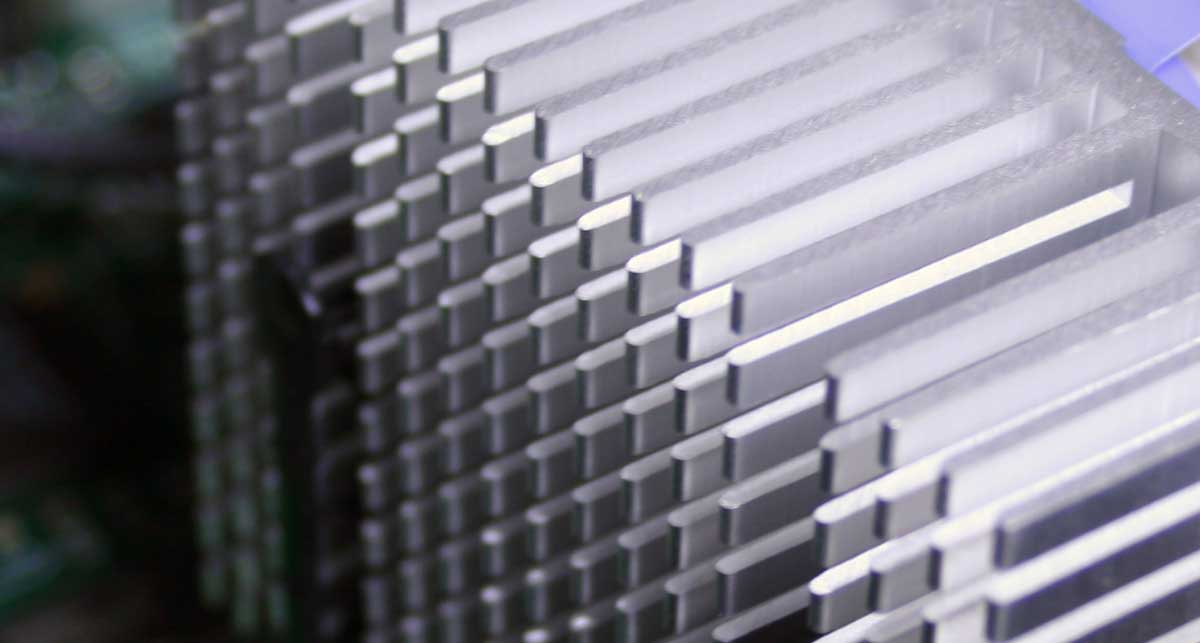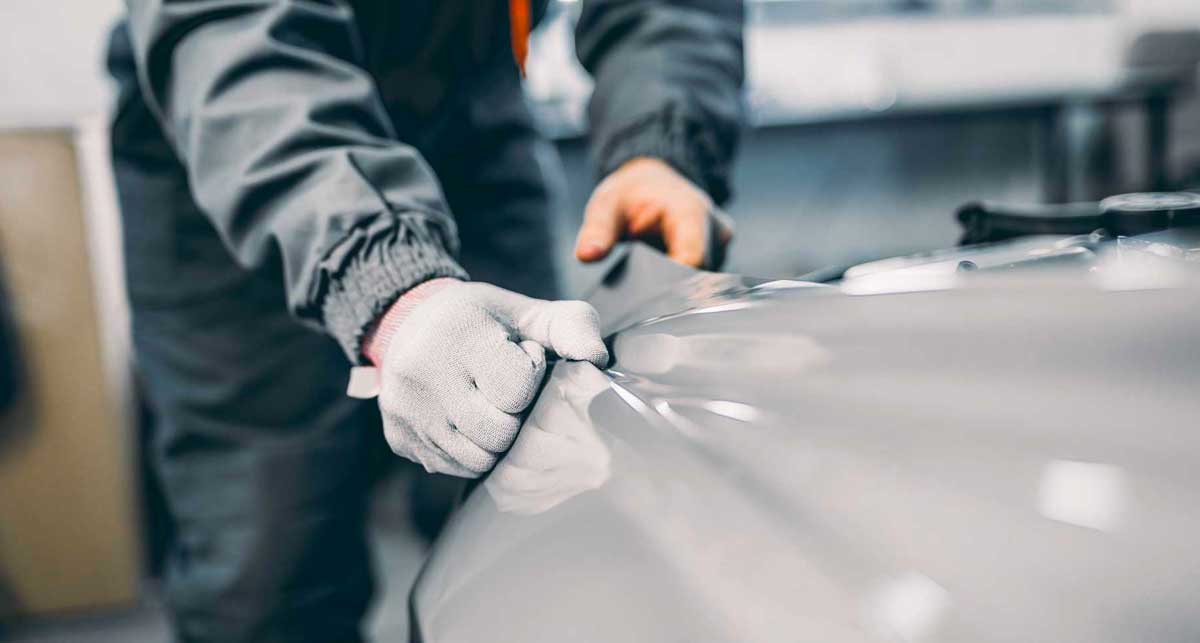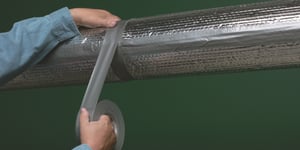Is balancing temperature critical to your project's success?
A single factor can sometimes define the difference between product success and failure. Temperature changes can disturb product stability, so manufacturers often use safeguarding materials like thermal insulation tape.
From our decades of experience with flexible material converting, it’s evident that certain projects benefit from the added control and safety of thermal insulation tape.
If you’re hoping to find a better method of balancing part temperature, thermal insulation tape could be the material for you. Let’s review the applications, benefits, and types of insulation tape.
What is Thermal Insulation Tape?
Thermal insulation tape, like all thermal insulation materials, reduces the amount of heat transfer between objects. The most widely known application of this concept is the insulation that goes in houses to save money on energy.
7 Thermal Insulation Tape Applications
Thermal insulation tape can be used in a variety of applications, including thermal conductivity, fireproofing, and both high- and low-temperature protection.
We will cover these applications, as well as others, in more detail so you can fully understand how the tape contributes to different processes.
1. PIPE NETWORK PROTECTION
Thermal tape contains foam that creates a heat barrier, so residential and commercial builders use it to mitigate heat loss on water lines. The distribution itself may cause the heating medium to cool.
The cooling of the pipes is inevitable without an insulation barrier, assuming they’re not in a heated area. It’s especially true during winter, which may harm the heating quality of the pipes. As a result, occupants may end up with lukewarm water when it reaches their faucets.
In general, heat loss is an issue for metal pipes more than any other form of piping. However, heat insulator tape can compensate for the lack of heating in a specific area.
Thermal insulation tape can help prevent frosting or condensation on the pipes. Cold pipes produce condensation upon encountering humid or warm air, causing puddles to form that cause more humidity. Applying insular tape during the colder months, you can counter frozen and burst pipes during the winter.
2. STREAMLINING THE INDUSTRIAL PROCESS
Transported substances within process piping often must remain at a specific temperature until they reach an intended destination. Insular tape can maintain the desired temperature so manufacturing facilities can continue operations unabated.
Industrial process piping demands precise temperatures during its conversion phases, and thermal tape plays an integral role in maintaining the proper temperatures. Taking steps in advance, like applying fiberglass cloth insulating tapes on hot-process piping, could help regulate processes.
Thermal tape is an invaluable tool for processing piping in all the following industries:
- Food and beverages
- Oil and gas
- Manufacturing
- Power generation
- Aerospace
- Wastewater treatment
Aside from heat dissipation, the tape can distribute cooling materials effectively. Thermal tape is more durable and can withstand harsh temperatures during the industrial process.
3. FIRE PROTECTION PROPERTIES
Heat insulator tape can come in the form of intumescent tape.
Intumescent tape is a possible safeguard against fires and an effective soundproofing mechanism. In addition, it's a thin form of tape that you can apply easily on all domiciles and is, therefore, less noticeable.
In the event of a fire, intumescent tapes will expand and form a barrier against fire damage, providing the necessary insulation a structure needs before fire crews can snuff it out. This can help save properties from ruin in the event of fire damage.
4. OPTIMAL HEAT REFLECTION
Thermal insulation tape is an excellent option for constructing products or structures that must reflect heat. Certain types of insulation tapes may contain metallic plastic or foil that can reflect heat.
Other types of tape may have an interior foam barrier with a foil or metallic covering to reflect radiant heat. Apart from thermal radiation, the tape protects against any mechanical abrasions. Depending on the product, a heat-protective tape can also undergo up to 1100°F of continuous heating.
Thermal taping can turn heat away from the following:
- Hoses
- Lines
- Cables
This type of tape cuts just as easily as any other. As a bonus, crew members don't have to disassemble existing structures to instill heat-reflective capabilities.
5. ROOF PROTECTION BARRIER
Heat tape is a form of electric tape that prevents the accumulation of ice and snow on roofs. It spreads heat along the pipes to create a warmer surface, encouraging runoff and reducing the amount of snow and ice that sticks.
This method to prevent blockage will ideally decrease snow and ice buildup in gutters. You can use thermal insulation tape to enhance buildings with adequate water runoff as the snow and ice melt.
6. DIE CUT THERMAL TAPES
Thermal tapes have a variety of qualities, but die cut is among the most important due to its many uses. You can use die-cutting for thermally conductive tapes, fostering quality dielectric power using temperature adhesions.
Die-cut thermal tape may come in complex shapes or sizes, depending on the nature of the project’s conductive activity. A die-cut job will conform the thermal tape to any commercial or residential construction venture.
7. THERMAL CONDUCTIVITY
Besides construction projects, thermally conductive tapes provide adequate heat dissipation away from the hotspots of electronic devices.
One common application is when thermal insulation tape is placed around a circuit board to avoid “heatsink” or the unwanted absorption of heat. Manufacturers can also use thermal insulation (i.e., polyimide) tape to coat electronics.
Thermal tape transfers the heat to cooler areas of the device. It's a vital asset that prevents overheating in electronics and spreads the heating evenly. The die cut addition adds to the thermal transference over the surface area.
You'll find that thermal conductive tapes contain special acrylics, as opposed to ceramics, which make the tape conductive. Yet, both materials contribute to more effortless thermal transfer and tougher adhesion.
Overall, the best type of conductive tape should include the following benefits:
- Enhanced mechanical durability
- Quality wet-out of the surface
- Simple application
- Dielectric quality
- No halogen
- Thin bonding applications
- Immaculate shock performance
It's the best form of tape for devices (i.e., power transistors) that generate a fair amount of heat.
The Best Types of Tape Insulation
Although bonding strength is essential, other qualities such as lap shear, die strength, and holding properties are also crucial. You may need more robust features depending on the project:
- Example: Thicker tapes provide enhanced bonding and better insulation overall. With that, thicker tape forms have reduced shear strength because the tape has a more prominent bond line.
The best type of thermal tape retains the right balance of all these traits.
TYPES OF ELECTRICAL TAPES
There’s a wide array of heat insulation tapes that become vital during the construction process.
Electrical tape derives from many types of plastic, vinyl being its most common form. Another variation is polyester tape, whose thin composition makes it ideal for wrapping the following objects:
- Potentiometers
- Capacitors
- Coils
Polyester tape enables them to resist abrasions and gives them a tough texture. For class H forms of insulation, the electric tape may also derive from fiberglass cloth.
Fiberglass cloth is another common form of thermal tape, keeping high temperatures at bay. It fares well against solvents and chemicals and can enhance non-electrical components. Builders can use this durable tape to wrap electrical wiring and facilitate heat transfer.
Cloth friction tape is more flexible than other tape forms, allowing users to tear it away by hand. Builders use this adhesive for wrapping wires, harnesses, and cables.
If your crew members need something sturdier, double-sided thermal tapes provide strong bonding properties that can streamline workflows. The tape has a thermal-based ceramic powder, and the material may comprise aluminum foil or polyimide for additional strength. Despite its durability, however, it's easy to handle overall.
- Note: Aluminum tape buffers thermal conductivity, and polyimide tape adds electrical buffering.
ALUMINUM FOIL TAPES
Aluminum foil tape is one of the best forms of insular tape because of its longevity and ability to provide adequate protection in cooler temperatures. You'll find metallic foil tapes attached to coils or tubes of refrigerators to foster thermal exchanges.
Many builders use aluminum tape to stabilize temperature variations in an area (i.e., residential attics) because it offers more safeguards than rubber adhesives in thermal regulation.
The acrylic nature of aluminum tape provides the necessary thermal management. In addition, it adds more cohesion and adhesion than other varieties, like tapes with rubber adhesives. These other insular tapes may degrade quickly when UV light or solvents are exposed.
Aluminum foil can survive hot and cold temperatures, and its acrylic properties make it flame-resistant and more substantial than other products.
- Example: Rubber synthetic adhesives provide more temperature versatility, but it doesn't fare well in the light. Moreover, it doesn't have a solid mechanical strength compared to aluminum tapes.
Workers may need scrap metal or drywall meshing with other fasteners to secure the proper insulation. As with other forms of thermal tape, aluminum doesn't require additional accessories to function correctly.
Thermal Insulation vs. Heat Activated Adhesives
Although the names may seem similar, the two don’t have much in common besides being adhesives.
Heat-activated adhesives only begin to bond or adhere after reaching a specific temperature.
Heat-activated adhesives' benefits and uses vary significantly from thermal insulation adhesives. Instead of focusing on energy retention, heat-activated tapes rely on chemical reactions, which create bonds between the adhesive and the surface.
Because of their strength, heat-activated adhesives are primarily used in induction curing and high-pressure composites. Meanwhile, thermal insulation tape is purposed for heat distribution and doesn’t require anything to be activated.
The Benefits of Thermal Tape Over Other Varieties
Thermal paste is an alternative to thermal tape, but not only is it messy, it often takes an expert to distribute the paste in a way that evenly distributes heat.
You may not always have a thermal paste expert on staff during a construction project. Unlike thermal paste, thermal tape has minimal learning curves or precise strategies.
Builders can apply adhesive tape without extra adhesives or products. They often use thermal insulation tape for various purposes, such as pipe insulation, electrical heat disruption, or coating protection.
The simplicity of cutting and applying the tape will also save time and money by allowing builders to finish jobs in a quicker, more comfortable manner. As mentioned previously, thermal insulation tape can also be die cut into custom parts, allowing it to be quickly spread over surfaces.
Getting Started with Thermal Insulation Tape
If you’re searching for a single roll of thermal insulation tape, you can check your local hardware store or online retailers. However, if you’re hoping to find a large quantity or you have a custom design, then you’ll want to consider reaching out to a converter.
Getting started early will help you maintain your manufacturing process in the long run.
Looking for more info? You can also look at our Learning Center for more resources on thermal management materials.
Originally published: November 15, 2022
.jpeg?width=290&name=0%20(1).jpeg)
